admin
Nonstick Cookware Ranges Prices and Styles to Meet Every Need
Mauviel’s latest foray beyond copper and into nonsticks is the M’stone3 Fry Pans with anodized aluminum. The fry pans are lined with Eclipse®, a modern nonstick coating that Mauviel says will last 10 times longer than other coatings while also maintaining its release properties. The Eclipse coating is a three-coat, internally reinforced nonstick system developed by Whitford. The bottom coat contains a carefully chosen and blended combination of resins and unusually hard materials, permitting a far higher percentage of special reinforcing elements. The mid-coat also contains these special reinforcing elements, and is actually a basecoat used in other Whitford reinforced systems. The topcoat is rich in fluoropolymers, and is dedicated entirely to food release.
Made in France, the 3 to 4 millimeter thick anodized aluminum fry pans heat up quickly and evenly, offering uniform distribution of heat through the entire body of the pans. An integrated induction bottom allows cooks to use the pans on gas, electric, halogen, and induction stovetops. The fry pans are lightweight for easy handling and lifting, and are broiler and dishwasher safe. M’stone3 Fry Pans feature cast stainless steel, stay cool, ergonomic handles engraved with the hallmark: Mauviel 1830. The collection hit shelves in June and ranges in price from $115 to $175.
Le Creuset is also expanding on its nonstick offerings. Le Creuset Toughened Nonstick is a premium range of hot-forged hard-anodized nonstick cookware featuring an innovative, patented triple-reinforced coating, making it extremely durable with a flawless performance. The PFOA-free nonstick coated interior and exterior offers superb food release and makes clean-up easy. An encased magnetic stainless steel base provides excellent stability and compatibility with all stovetops. The cookware is metal utensil safe, dishwasher safe, oven safe up to 500 degrees Fahrenheit, and is backed by Le Creuset’s limited lifetime warranty.
The brand is launching six new products from the line throughout 2015, including a 3-Quart Saucepan, a 6.3-Quart Stockpot, and Glass Lids with stainless steel knobs in four sizes, from 8 to 11 inches, that are also compatible with Le Creuset Stainless Steel Cookware. The collection has a total of 24 SKUs with suggested retail prices ranging from $25 to $180.
New Circulon® Momentum Hard Anodized Cookware features Circulon’s patented TOTAL® Nonstick System for a superior nonstick experience. Circulon’s signature and unique cooking surface of raised circles – combined with a premium quality, PFOA-free and metal-utensil safe nonstick – ensures that foods prone to sticking easily slide off the cooking surface and cleanup is quick. It is made of heavy-duty hard-anodized aluminum – a material that is twice as strong as stainless steel – and includes a premium nonstick exterior finish in a black hue with matching silicone black handles.
Additional key features include convenient tempered glass lids for easy monitoring of the cooking process, and stay-cool handles crafted of hollow stainless steel and heat-resistant silicone for a sure and comfortable grip. Circulon Momentum is oven-safe to 400 degrees Fahrenheit, providing maximum cooking flexibility for the busy cook. The line is available in an 11-Piece Set for $199.99 that includes a 1-Quart Open Pouring Saucepan, 2-Quart Covered Saucepan, 6-Quart Covered Stockpot, 3-Quart Covered Sauté Pan, 8.5-Inch Open Skillet, 11.5-Inch Open Skillet, and a 10-inch Covered Skillet. Several open stock items are also available.
Swiss Diamond unveiled three deluxe cookware sets this year that offer customers a chance to receive a price break while they stock up on all the nonstick cookware they need. The coating of each Swiss Diamond pan contains up to 200,000 real diamond crystals for a long-lasting nonstick surface. Swiss Diamond engineers have developed a method of combining the real diamond crystals with a high quality nonstick composite for a superior cookware performance. Each piece of cookware is made in Switzerland and receives three layers of nonstick coating, ensuring longevity and helping it resist damage.
The cookware is made of pressure-cast aluminum for uniform heat distribution with no hot spots. It is guaranteed not to warp, and each piece has a perfectly flat base for use on any ceramic, gas or electric cooktop. The ergonomically-designed handles are well balanced and temperature safe up to 500 degrees Fahrenheit, allowing you to finish cooking in the oven. Sturdy tempered glass lids feature an adjustable steam vent for advanced moisture control and are also oven-safe.
Among the deluxe cookware sets, the 14-Piece Classic Set is priced at $999.95 and allows consumers to save $325 on the price of buying the pieces separately. The 22-Piece Estate Set is $1,499.95 and consumers will receive savings similar to the Classic Set. 27-Piece Suite Set is priced at $1,999.95, for a savings of over $700 by purchasing the pieces bundled.
For something a bit more colorful, Faberware® has introduced purECOok Ceramic Cookware. The cookware combines a colorful porcelain enamel exterior in four shades – gray, aqua, lavender and blue – along with an advanced, easy-cleaning, white ceramic cooking surface that allows cooks to safely prepare their favorite dishes at high temperatures, and enjoy speedy post-meal clean-up. The innovative, PFOA-, PTFE- and cadmium-free ceramic nonstick provides superb food release, with the larger skillets feature a uniquely-textured quilted nonstick cooking surface to further boost food release. The porcelain enamel exteriors are stain-resistant and the cookware’s handles sport distinctive stainless steel accents. The line is oven safe to 350 degrees Fahrenheit, and is dishwasher safe.
The purECOok Ceramic Cookware collection is available as a 12-Piece Set, that also includes Prestige® nylon tools, for $89.99. A Twin Skillet Set includes 9.25-inch and 11.5-inch Open Skillets for $34.99, and open stock items are also available, ranging from $14.99 to $39.99.
This story was originally published in the July 2015 issue of Kitchenware News, a publication of Oser Communications Group.
Knife Glider Takes the “Ouch” Out of Food Preparation
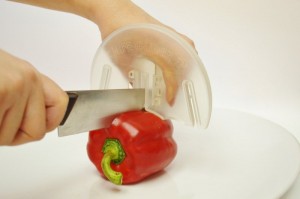 Cuts in the kitchen are a common occurrence. Even professional butchers, some of the world’s most experienced knife handlers, use chain-mail gloves to protect their hands from injury that can range from painful and inconvenient to crippling. Home cooks probably don’t have access to professional butchers’ gloves, but now there’s The Knife Glider, an easy-to-use plastic shield that protects hands and makes slicing and chopping fast, easy, and, most important, safe.
Cuts in the kitchen are a common occurrence. Even professional butchers, some of the world’s most experienced knife handlers, use chain-mail gloves to protect their hands from injury that can range from painful and inconvenient to crippling. Home cooks probably don’t have access to professional butchers’ gloves, but now there’s The Knife Glider, an easy-to-use plastic shield that protects hands and makes slicing and chopping fast, easy, and, most important, safe.
The Knife Glider from Brilliant Inventors LLC fits any size knife, from the smallest paring knife to a full-size butcher’s blade. The tough plastic is BPA-free and dishwasher safe. It’s completely transparent, so it’s easy to see what you’re doing, and convenient attachments make it the ideal holder for peeling vegetables or slicing hot meats.
“It all started when my wife Jennifer, who is an experienced cook, had to go to the hospital for stitches after a kitchen accident,” says Brilliant Inventors President Sam Shipp. “After that experience, Jennifer and I developed a product that’s safe and easy to use with either hand, snaps together to keep attachments from getting lost, and folds to fit easily in the knife drawer. It feels very natural in your hand, and the best part has been the reaction from consumers. People take one look and see how much safer cutting can be, and they want one for themselves, for their husbands and wives, for their parents, and for their kids.”
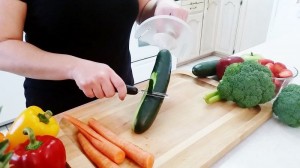 The Knife Glider was created with extensive input from prospective users and funded through a campaign on the crowd-funding site Indiegogo. The Knife Glider has won two business plan competitions, and Brilliant Inventors was named innovative company of the year by the Small Business Administration of South Texas for 2015.
The Knife Glider was created with extensive input from prospective users and funded through a campaign on the crowd-funding site Indiegogo. The Knife Glider has won two business plan competitions, and Brilliant Inventors was named innovative company of the year by the Small Business Administration of South Texas for 2015.
The Knife Glider kit, complete with attachments, retails for $19.95. For further information, visit www.knifeglider.com.
Kickstarter Gadgets for the Kitchen
Kickstarter products are making a splash in the media and garnering buzz among consumers despite the fact that the products featured are only ideas that have not yet gone into mass production and are many times only in the pre-order stages – if you’re lucky. It is a unique concept especially when you consider that prior to Kickstarter, regular consumers never had such an in-depth glimpse of products in the pre-production stages.
If you’re not familiar with Kickstarter yet, here is your crash course. Kickstarter is a popular crowdfunding resource that is currently helping to facilitate the introduction of many new products, including innovative kitchenwares, to consumers during the prototype stage of product development. It allows people to launch online project campaigns in order to raise the funds needed to make ideas go from concept to reality.
Project creators can set a deadline and funding goal, then it is up to supporters of the idea to provide the initial funding to get the product to the next step toward the market. Crowdfunding websites allow the creators to outline a business plan and define exactly what contributors can expect for their funding. In the case of Kickstarter, if a project does not reach its full funding goal, the backer who made the pledge will not be charged.
To date, 44 percent of projects on Kickstarter have reached their funding goals. Some kitchenwares that have been successfully funded include the Anova sous vide circulator; the Coolest Cooler, a portable cooler with a built in blender, removable Bluetooth speakers, a waterproof USB charger, and LED lights embedded into the inside lid of the cooler; GIR spatulas and the Belle-V Ice Cream Scoop.
One gadget currently garnering funding on Kickstarter is HidrateMe, a smart water bottle that works with an app to track the user’s water intake. The 24-ounce reusable bottle has a sensor stick inside that automatically tracks how much water is consumed throughout the day. It sends information to the free Hidrate app on your phone and glows when its time to drink more water.
The project started with a funding goal of $35,000 and as of print date had already surpassed the goal with $201,205 pledged. The project funding window will close in early July.
Another hydration project currently making waves on Kickstarter is an induction kettle called MIITO. MIITO works by only heating as much water as needed in any vessel through an induction base and a stainless steel rod. Users simple place the desired vessel, like a teacup or mug, on the induction base and then place the steel rod directly in the cup. MIITO heats the rod inside the water until you have a nice hot cup of tea. It also works with milk for hot chocolate and can warm a cold cup of coffee or a bowl of soup.
MIITO is based on induction, which is essentially the wireless transfer of energy. MIITO’s bottom base creates an electromagnetic field, which heats only ferrous materials, in this case the disc attached to the bottom of the rod. When the rod is placed inside a vessel filled with a liquid, the disc heats up and transfers the heat directly to the liquid, meaning only the liquid is heated. MIITO’s design is safe for children since the top of the base always stays cold.
The project started with a funding goal of $167,383, or £150,000, and has reached $726,034 as of print date. The funding stretch ended on June 13.
IKAWA is a home coffee roaster that is also worth mentioning, as it has recently surpassed its funding goal as well. The digital micro-roaster allows coffee enthusiasts to roast their own coffee at home and control the roast recipe through an app. Users simply select the roast recipe from their smartphone, drop the beans into the roaster and watch them roast. The whole process only takes between three and 10 minutes. Recipes can also be adjusted for users who are a bit more adventurous, or created from scratch.
The company has already been supplying its micro-roasters to coffee professionals, and the Kickstarter campaign will allow the home version to reach consumer markets. To complement the machine, IKAWA has been working with coffee producers to source quality green coffee beans from origins such as Burundi, Ethiopia, Brazil and Guatemala. The company will sell its own green beans, but the machine will work with any that the user has on hand.
IKAWA has just surpassed it’s funding goal of about $90,000, or £80,000, as of this print date, ultimately receiving about $178,200, or £158,019, from 366 backers. Pre-orders will be fulfilled in February 2016.
This story was originally published in the July 2015 issue of Kitchenware News, a publication of Oser Communications Group.
Berndes Cookware USA Announces Return of Popular SignoCast Pieces
The classic Berndes SignoCast cookware is a selection of top-quality, tried-and-trusted cookware known for its elegant appearance of black on black with a touch of shimmering flakes accentuated by a sleek black phenolic handle.
Berndes Cookware USA has decided to bring back several classic pieces including three sizes of the Covered Sauté Casseroles, the Fish Grill and the SignoCast Wok.
SignoCast Cookware is made of high-quality vacuum-pressure cast aluminum and is guaranteed to never warp. SignoCast is exceptionally easy to clean and facilitates fat-free cooking. The SignoCast Cookware is coated with a three-layer professional quality non-stick interior coating and a two-layer non-stick exterior surface coating, to protect foods from sticking and burning. All SignoCast pieces that are covered come with a special tempered glass lid with stainless steel rim. The premium stainless steel rim and knob are heat-resistant and ideal for energy-saving and offer full-view cooking.
Berndes has developed, produced and distributed cookware since 1921. As has always been the case, production is carried out at the company headquarters in Arnsberg, Germany. These processes only use materials that do not affect the environment, resources or health. The in-house test laboratory conducts continual quality controls accompanying production. Neutral test institutions both attest the company’s high quality standards repeatedly domestically and abroad.
The SignoCast pieces are expected to go live on the www.berndes-cookware.com website by the end of July, just in time for wedding season, transitioning from a dorm room to an apartment, or just upgrading from basic cookware to gourmet pieces.
Selling to the Socially Networked Customer
 The socially networked customer is one that asks Facebook friends whether they should invest in a Vitamix or a Blendtec. They might spend an extensive amount of time reading online product reviews to narrow down a hunt for the perfect knife. They walk into a store ultra-prepared. When on a shopping excursion, they possibly tweet about a new purchase or a bad experience.
The socially networked customer is one that asks Facebook friends whether they should invest in a Vitamix or a Blendtec. They might spend an extensive amount of time reading online product reviews to narrow down a hunt for the perfect knife. They walk into a store ultra-prepared. When on a shopping excursion, they possibly tweet about a new purchase or a bad experience.
Ultimately those customers who use social media during their shopping process are about four times more likely than non-users to spend more on purchases as a result of a digital shopping experience, according to a report by Deloitte Digital called “Navigating the New Digital Divide,” which studied over 3,000 U.S. consumers in late 2014 through early 2015. Digital influenced $1.7 trillion of in-store sales last year compared to just $0.33 trillion only a couple of years ago, according to the study.
So what do retailers do when this type of customer walks into their store? Bob Phibbs, CEO of The Retail Doctor, a retail consultancy based in upstate New York, says that making a sale goes back to training staff well to gain the upper hand with the well-researched customer.
“You have to have employees that can share the wisdom of why one is better than the other, and they can compare and contrast what someone may have found on a website,” says Phibbs. “They can still make the sale if they have taken the time to train people how to engage customers and how to build a relationship. I know that sounds old hat, but most people don’t know how to do those things anymore.”
This basic approach is especially important, Phibbs point out, because the dynamic between customers and retailers has changed. Customers can now surf the web and easily get information on specific products they are interested in, whereas employees must retain general knowledge on all the products throughout the entire store.
“In the old days, retailers had all the knowledge, and you had to trust somebody to know what they were talking about with that product,” says Phibbs. “The reality is there’s no employee that’s going to know everything about all of your SKUs, for the simple reason that the customer, when they do their shopping, has already limited everything down to a really tight search; so of course they know more than the employees.”
Greet these customers when they come into the store. Too many retailers take the approach of ignoring a customer who has a phone in hand while shopping, thinking that perhaps the customer is “showrooming,” or browsing in person to ultimately purchase online, Phibbs says. He urges retailers to make it a point to greet these customers and actually encourage them to use their phones in the store because it is a way for the retailer to get involved in the customer’s own social media use.
“You don’t want them to take a picture of just a product in your store,” says Phibbs. “They’re going to share it if it’s a picture of them with the product in the store, so you have to be willing to take it. And particularly, the younger the customer, the more that’s important. If somebody tried to do that with my mom who’s 90, she’d probably slug them and say, ‘Leave me alone.’ But if you’re 30 or something, that would be very important because they’re all shopping socially.”
Make product suggestions. The customer may have an idea about what they want to buy, but simply making a suggestion opens up more possibilities. This is especially important if the customer has already honed in on a product that you do not carry.
“I think most retailers go through and they pretty much just act like a warehouse. They wait for the customer to tell them they’re looking for the KitchenAid ultra power mixer in grape, then the employee says either they have it or they don’t by checking a computer, and they go get it off of the shelf, and they think they did a great job. Well, I think that’s the problem,” says Phibbs. “If you don’t add something, if you don’t go through and suggest something – let’s say if you don’t have the grape, but you’re able to talk to them about how the burgundy might go just as well, and it might be fun or something … If someone walked into your store today, the reality is, they want to buy it. Nobody’s walking into a store these days going, ‘Oh, I’m just going to check it out.’ They did that online. So the stakes have gotten higher for retailers.”
You don’t necessarily need a social media presence for your store, Phibbs says. Doing so requires time and effort to obtain the desired results, and many retailers cannot realistically achieve this alongside all the other responsibilities that are required of them as a small business owner.
“To do it right really takes a lot. I see too many retailers just give it over to their daughter or somebody and say, ‘You do it for me,’ and they don’t understand that just throwing a picture up on a Facebook page or tweeting something out isn’t really going to build a relationship. You really have to create a tribe, a community, and that takes a lot of work, I won’t kid you,” says Phibbs. “Too many people think it’s a replacement for a circular, or a coupon, and just throwing up a 20 percent-off coupon does not build any loyalty because there’s always somebody cheaper.”
If you do want to tackle social media, Phibbs suggests starting with one platform and mastering that one first. Facebook is a good place to start, he says, because people really do have conversations there and most of their friends will also be on the platform, plus Facebook offers the opportunity to place ads. Once you have picked the social media platform of your choice, schedule posts out ahead of time to make things easier. You could plan out all the tweets or Facebook posts for the upcoming week while having coffee on a Sunday morning. If you choose YouTube, then you might start by planning out five videos for the month. Try to avoid having posts from Facebook automatically also post to a Twitter account, or vice versa, because the two markets are actually very different and require different approaches to be effective, Phibbs says.
“Kitchen stores, I always think it’s interesting because you have so many gadgets,” says Phibbs. “Even if someone is just looking, they can pick up a $5 or $10 peeler or scraper, or something, if you would just be nice enough to get them to talk. Figure out how to get people to talk to each other, and if you do that, then a little sale can lead to a really big sale.”
This story was originally published in the July 2015 issue of Kitchenware News, a publication of Oser Communications Group.
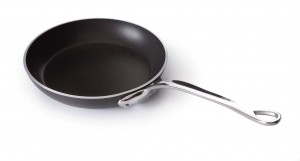
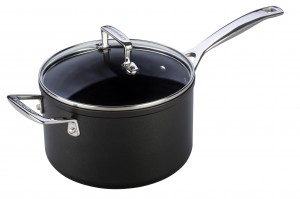
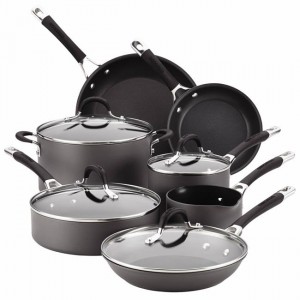
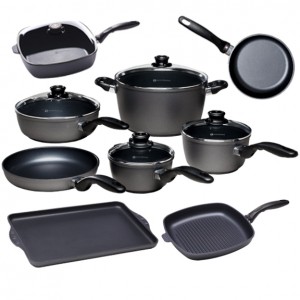
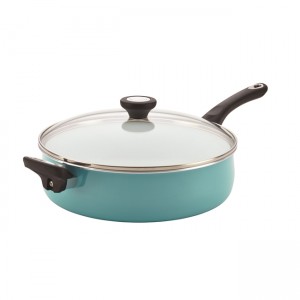
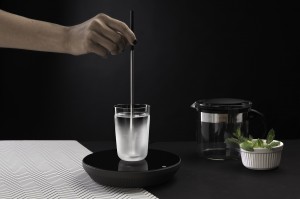
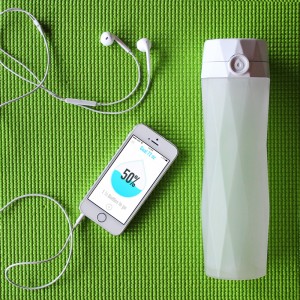
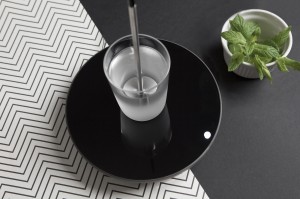
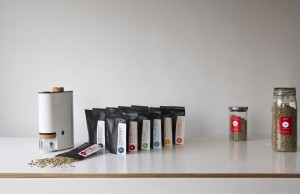
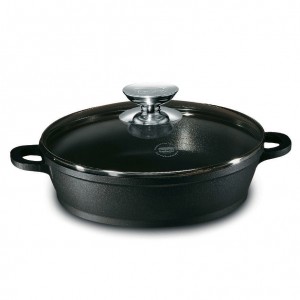
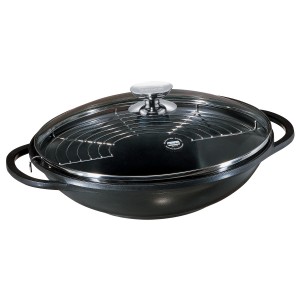
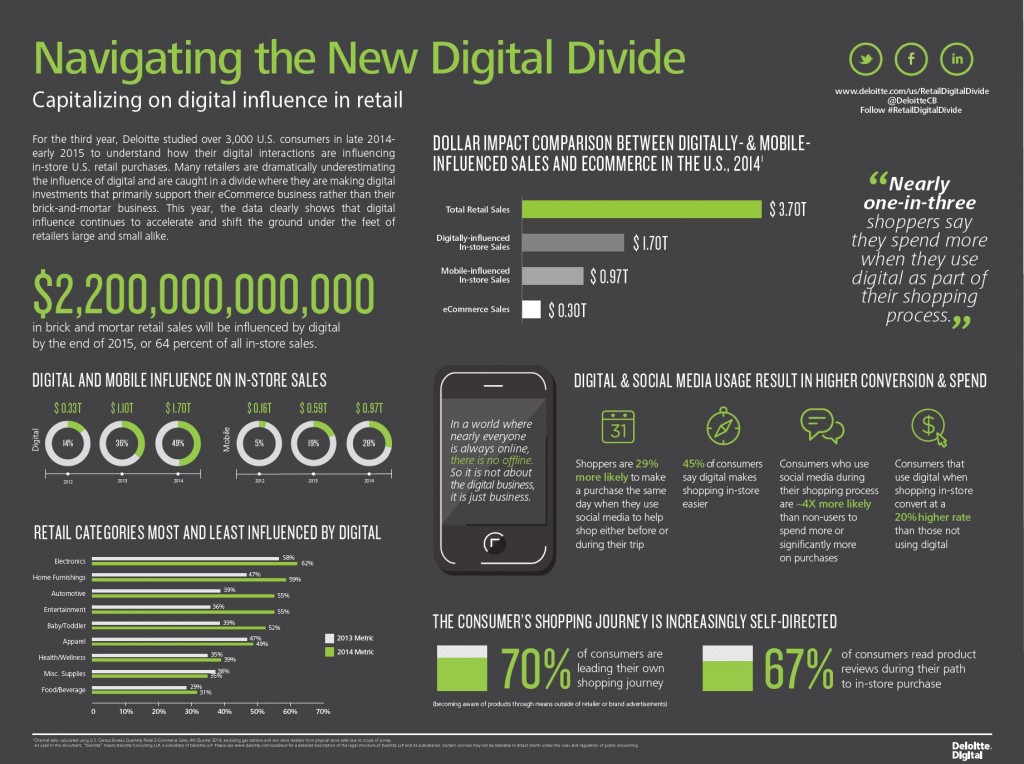

You must be logged in to post a comment.